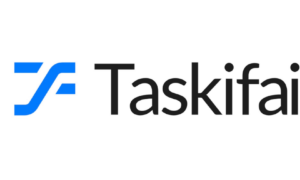To hire top talent, businesses nowadays require offering more than just fair compensation and health benefits. A retirement savings plan such as 401(k) for small businesses can be a deciding factor for many candidates, tipping the balance in your favor. Additionally, the owner’s retirement savings and tax benefits make this great employee benefit a practical choice.
Setting up a plan is affordable. But how can you choose the right product from 401(k) plans for small businesses and start it in your company? We have covered the complete process in detail below.
Let’s get started.
Steps to Starting a 401(k) Plan for Small Businesses
We have explained each step to start a 401(k) below.
- Determine the Type of 401(k) for Your Business
There are different types of 401(k) plans for small business that you can choose from:
- Traditional 401(k) Plan – This retirement savings plan allows employees to contribute a portion of their pre-tax income to a retirement account, where it can grow tax-free until withdrawal. However, a matching employer contribution to 401(k) is not mandatory. The contributions are deducted from employees’ taxable incomes, thereby reducing their current year’s tax liabilities.
- Safe Harbor 401(k) Plan – This Safe Harbor 401(k) plan allows max employee contribution to 401(k) without the risk of the plan being disqualified due to non-discrimination testing failure. The employer can either agree to make matching contributions or make non-elective contributions for eligible employees.
- Simple 401(k) Plan – A simple 401(k) is attractive since it requires lesser administration. A small business must have less than 100 employees to start this plan. The employer can contribute up to 3% of an employee’s salary or make a non-elective contribution of 2%, i.e., a contribution regardless of whether the employee makes contributions.
- Solo 401(k) Plan – This plan is for small businesses with only the owner and their spouse as employees. This allows for saving more money for retirement.
- Roth 401(k) Plan – The Roth plan allows employees to contribute a portion of their after-tax income, in addition to the regular pre-tax contribution. The earnings and withdrawals are tax-free. The employer contributions to 401(k) are made pre-tax and are also subject to taxation.
Once you decide on the plan that you want for your small business, you can reach out to a provider who can also help you make the right decision.
- Determine a 401(k) Provider
Here are some factors to consider when selecting a 401(k) provider:
Cost – Consider the fees associated with the plan, including administrative fees, investment fees, and any other charges. Look for a provider that offers competitive charges and a transparent fee structure.
Investment Options and Features – Look for a provider that offers a wide range of investment options with diverse features, such as the ability to make employer contributions, access to loans, etc.
Ease of Administration – Check if the provider offers an easy administrative plan that doesn’t require a lot of day-to-day management. Also, consider the technology and support offered, including online account access, mobile apps, and customer service options.
- Determine a Trustee for Your 401(k)
The trustee of a plan controls its assets and reports back regularly to either the employer or the management. He/she ensures that the money gets to the employees and that the retirement plan runs smoothly. The business owner is required to make the decision of choosing a trustee. So, you can hire someone who displays knowledge and expertise in this area.
- Adjust Accounting Processes to Include 401(k) Deductions
With the introduction of a retirement plan, another duty adds to your accounting team’s task list. They must ensure that the 401(k) contributions are transferred properly to employees’ savings accounts and the same is reflected in the records. The amounts may be different for employees so make sure to invest some time in putting a proper process in place.
- Make Your 401(k) Policy
Once it is set up, put your 401(k) policy in writing and announce the introduction to employees. Explain who can contribute, who is qualified to enroll, and how much the employer will be contributing. Make sure to also explain tax-related implications and when the contributions can be withdrawn.
Now, let’s answer some important questions.
How much should an employer contribute to a 401(k) plan?
Matching contributions by employers are tax-deductible and some administrative fees may also be incurred. The employer can contribute up to any amount as long as the total amount is less than 100% of the employee’s compensation or a fixed $66,000.
How much should employees contribute to 401(k)?
Just like employer contributions, there are some IRS limitations on employee contributions. The max employee contribution to 401(k) is $22,500 per individual or $30,000 for employees who are 50 or older, as of 2023.
Final Thoughts
The best way to ensure that your 401(k) plan is a success is to find a provider who can guide you through the entire process. They can also help you stay compliant when it comes to forms, notifications, and deadlines. Additionally, make sure to consider all fees, including setup and maintenance fees, right from the get-go.
I hope this was helpful!



































